 |
 |
 |
| |
ULTRA LONG-ACTING REFILLABLE ISLATRAVIR IMPLANT FULLY PROTECTS NHP AGAINST SHIV
|
| |
| |
in the session Dr Grattoni mentioned 3-4 years of possible "ultra-long".
CROI 2023 Feb 20-23
Alessandro Grattoni, Ph.D.
Houston Methodist Research Institute Houston, Texas / USA
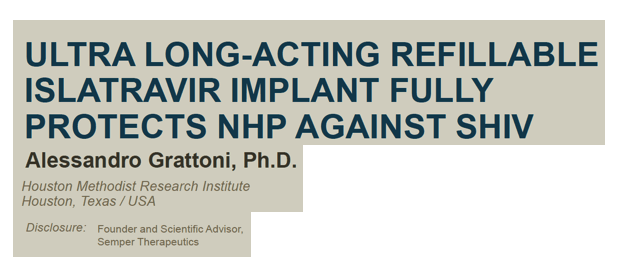
program abstract
Background: When taken as prescribed, antiretroviral (ARV) drugs are effective as pre-exposure prophylaxis (PrEP) against human immunodeficiency virus (HIV) transmission. However, consistent adherence to daily dosing regimen is challenged by issues such as pill fatigue, forgetfulness, stigma or lifestyle discordance. To this end, long-acting approaches with infrequent dosing intervals aim at improving therapeutic adherence and uptake. Among these, however, long-acting injectables suffer drawbacks of burst release, site-specific adverse reactions, and risky year-long sub-therapeutic tails. Moreover, injectables cannot be removed in the event of medical complications. Subdermal long-acting polymeric implants are also under investigations for HIV PrEP. However, such systems are commonly limited by decaying release profiles and require repeated surgical procedures for implantation and replacement upon drug exhaustion. To overcome these limitations, we developed a transcutaneously refillable ultra-long-acting islatravir delivery implant for HIV PrEP, based on a nanofluidic silicon membrane technology.
Methods: We developed nanofabricated, biocompatible, silicon nanochannel membrane implants with channels in size of 280 nm. The implants achieved constant and sustained islatravir release via electrostatic confinement on molecules diffusing along the nanochannel path. The implant allowed for the transcutaneous loading and refilling of islatravir. A 20-month PK study was performed in vivo in rhesus macaques with implant subcutaneously inserted in the animal's dorsum. Preventive efficacy was evaluated against rectal and vaginal infection using repeated SHIV challenges model in male and female rhesus macaques, respectively. Finally, implant toxicity and tolerability were assessed.
Results: Implants achieved constant islatravir plasma (median 3.14 nM) and islatravir-triphosphate (ISL-TP) (median 0.16 pmol/106 cells) levels for over 20 months uninterrupted, above the established PrEP protection benchmarks. In the PrEP efficacy studies with repeated low-dose SHIVSF162P3 challenges, the implants conferred 100% protection against rectal and vaginal infection. The implants were well tolerated with mild local tissue inflammation and no signs of systemic toxicity.
Conclusion: Our nanofluidic islatravir implant is a promising technology for HIV prevention, which may improve PrEP uptake, adherence and implementation.
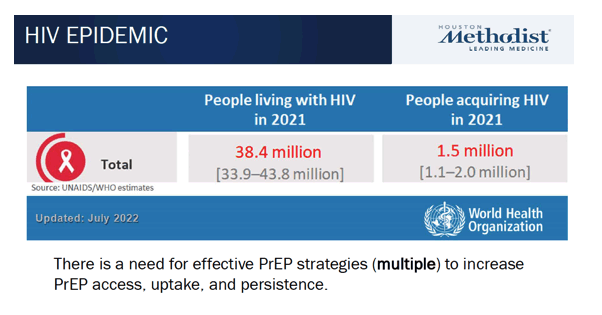
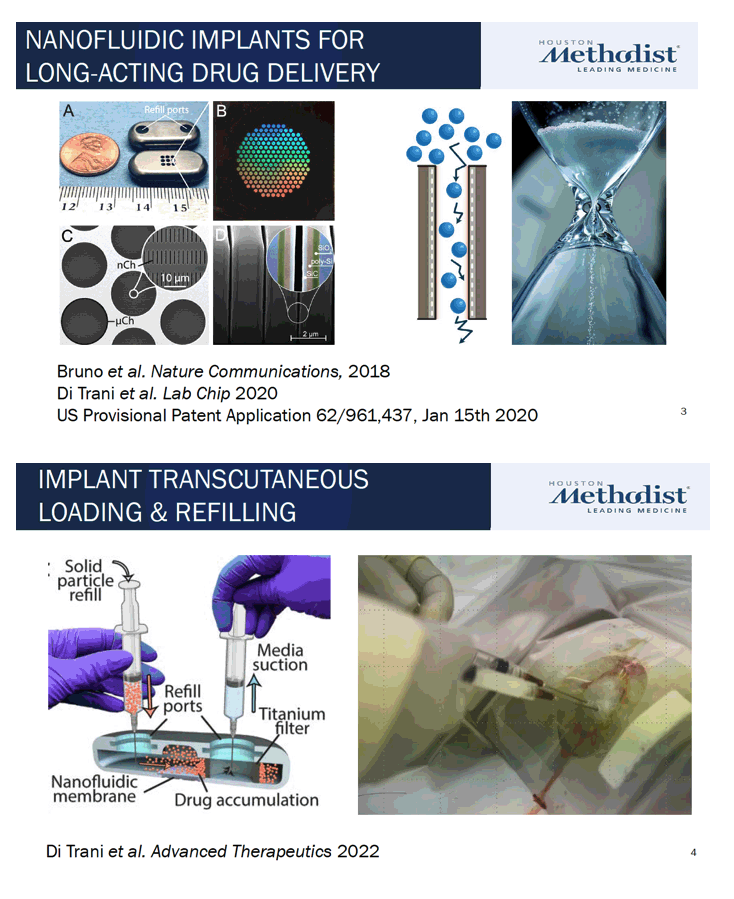
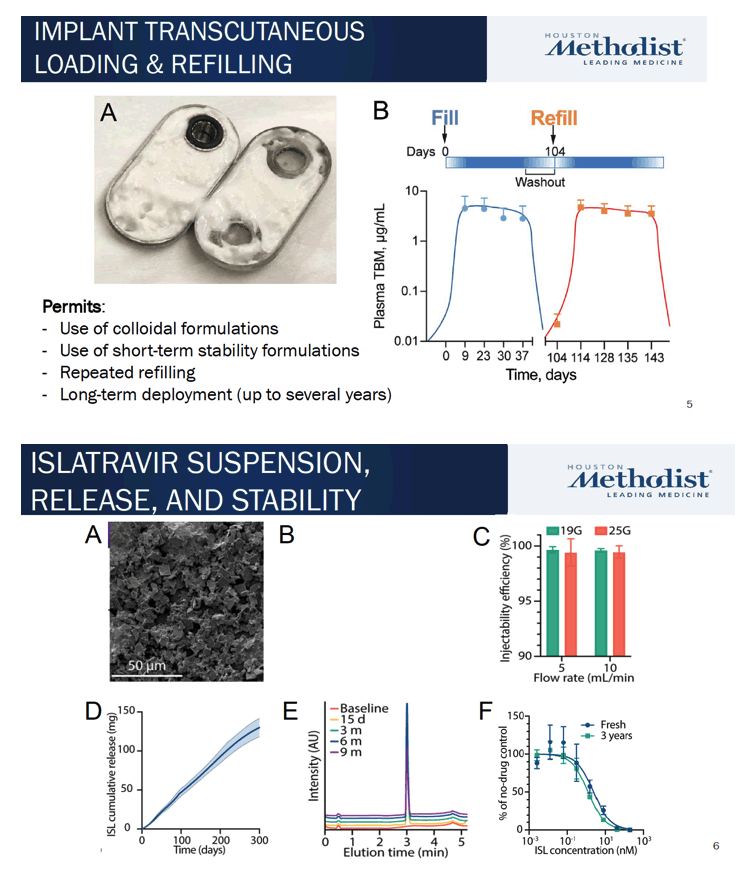
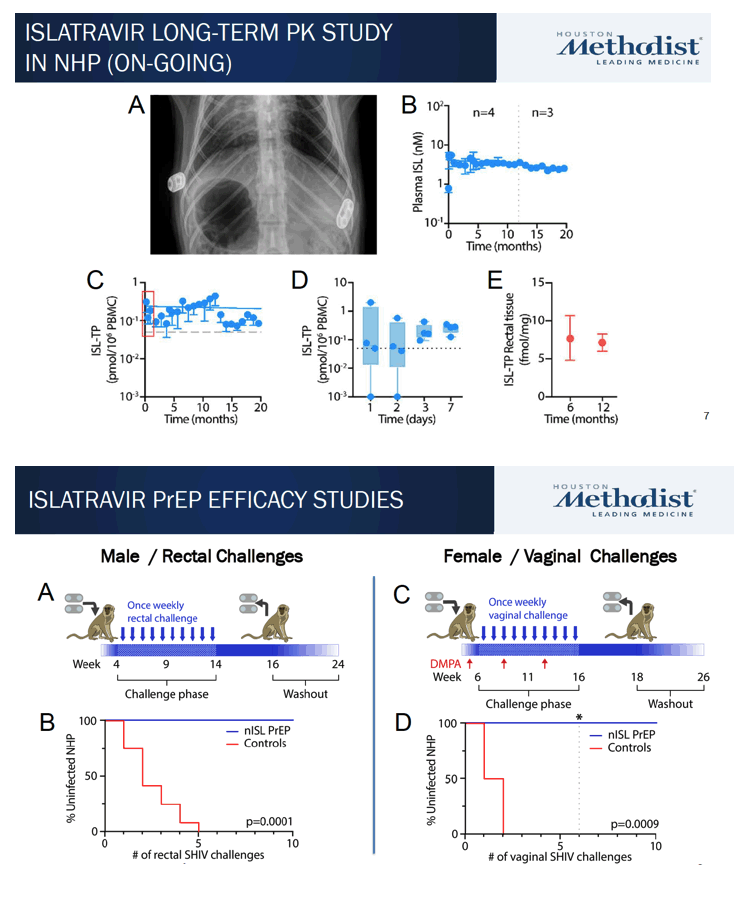
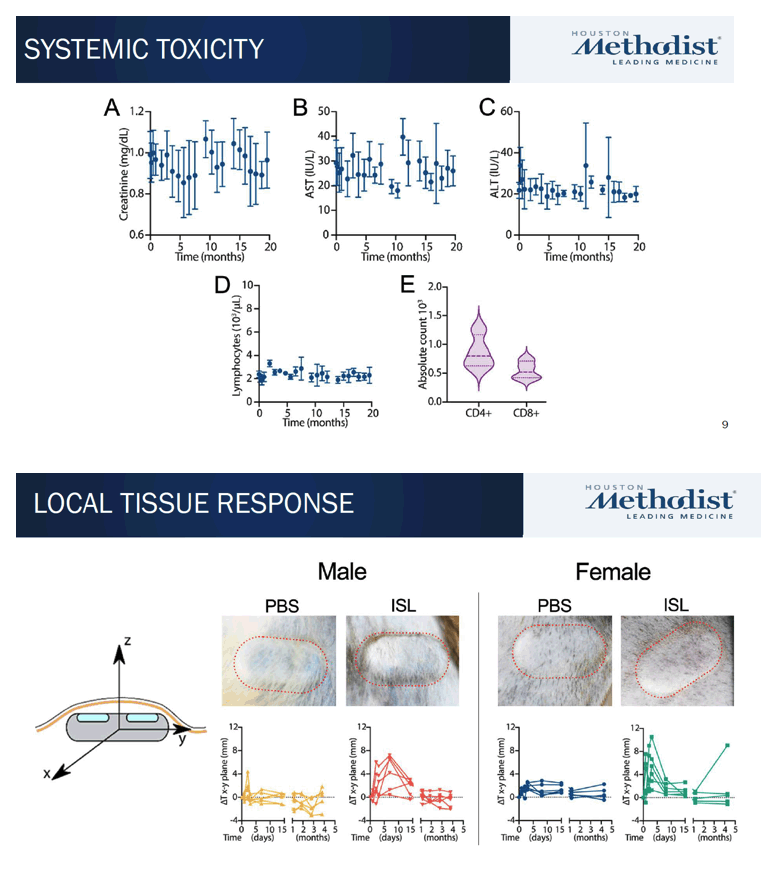
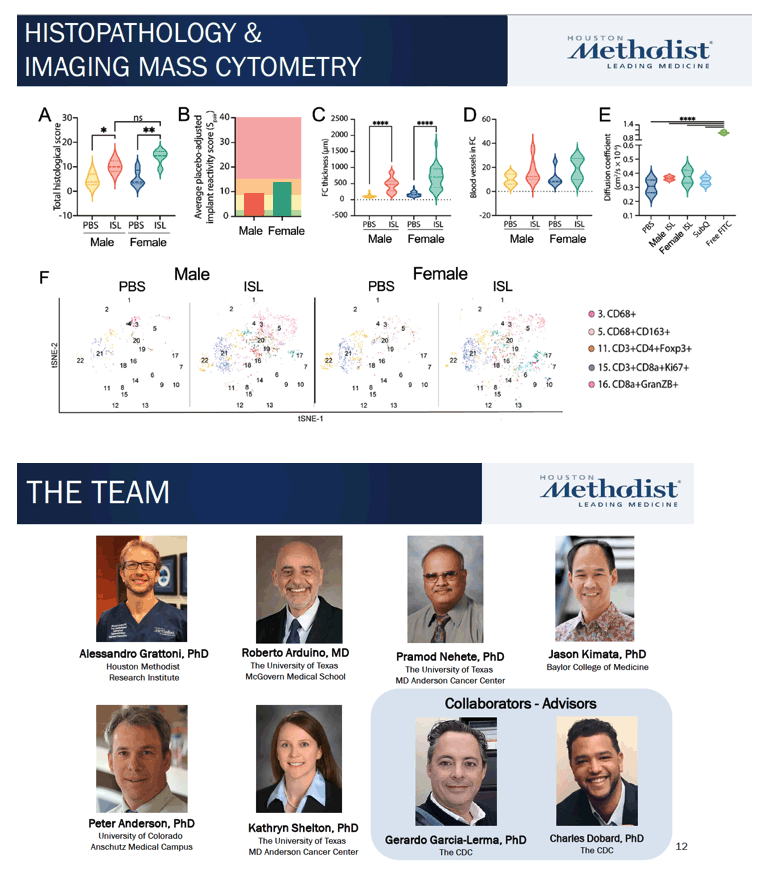
|
| |
|
 |
 |
|
|